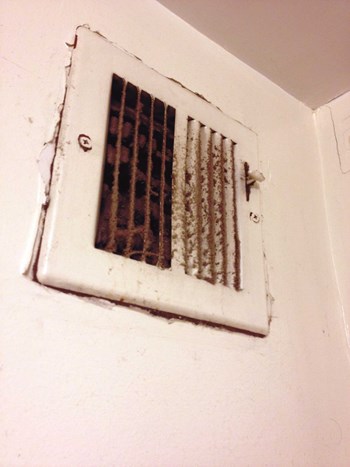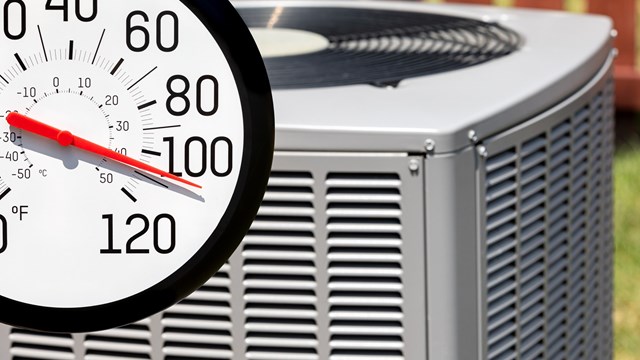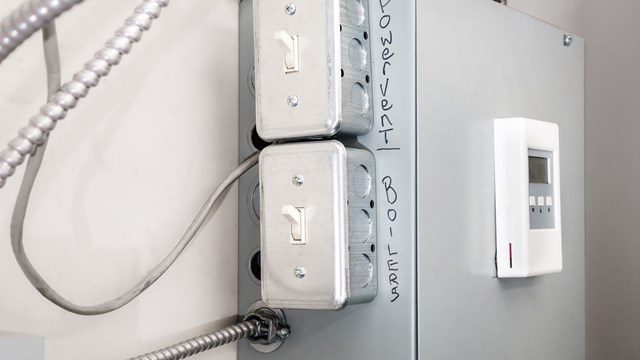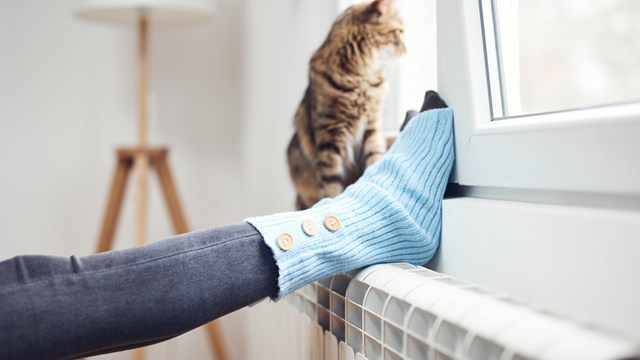
Few things are as important to our health and well-being as the air we breathe, especially inside our own homes. That is why it is so important for individual homeowners as well as management to stay up to date on issues of indoor air quality and ensure that everything possible is done to provide a healthy environment.
Problem Areas
Staying warm is always priority number one in the winter months. That desire to keep the cold out and the warmth in can lead to problems with air quality, as windows and doors are typically closed in winter. “The type of air problems that can lead to sealed homes in the winter time is wholly dependent on the construction of the home. The older homes don’t matter much because they leak like fizz and get many air changes, but newer homes are constructed with spray foam and are very tight and it can be a major problem if they don’t have a supplemental air supply,” says Gene Marckini, president of Boston Environmental Engineering Association.
“ASHRAE [the American Society of Heating, Refrigerating and Air-Conditioning Engineers] has established a standard of 20 cubic feet of air per person, per minute occupying a space. And in those spaces that are totally sealed up with no air changes you get a build-up of carbon monoxide, carbon dioxide and humidity. The carbon dioxide can make you drowsy and listless. The humidity levels building up and condensing on parts of the home can cause mold. Mold problems can cause allergies in normal people, and in people who are immuno-suppressed or sickly or that are asthmatic can cause severe allergy reactions.”
“What happens in the wintertime is that you are solely relying on your HVAC [heating, ventilation and air-conditioning] system and with that you’re not getting an adequate amount of fresh air from the outside, especially residentially,” says Michael Capillo, principal owner of Continental Clean Air in Wakefield, Massachusetts. “If you have poor filter maintenance in your HVAC system you’re basically breathing in finer particulate that may be circulated through your home or condo, and that gives you a greater risk of getting sick or catching a cold or becoming ill with seasonal allergies. This time of year a lot of people neglect keeping an eye on their filter. It’s all based on usage. If it’s a real, real cold winter, that heating system is going to be running 24/7. So your filter is important. I recommend any MERV [minimum efficiency reporting value] rating filter over 10. The higher the MERV rating the better the filter and it’s going it give you that much more infiltration and efficiency.”
“The types of filters that most people use are cheap and inefficient,” adds Chris O’Korn, an account manager with SynergyOne Solutions, Inc. in Canton, Massachusetts. “Because people know there is a filter in there and the filter has to be replaced, they don’t really look at what it’s filtering. In most cases, you can take a residential air filter and pour a bag of sand on it and watch the sand come right through the filter. You have to ask yourself ‘if the sand is getting through there what is this filter filtering out?’ Clean filters are extremely important in the winter time.”
According to the Massachusetts Department of Public Health, carbon dioxide is a normal constituent of exhaled breath and is commonly measured as a screening tool to evaluate whether adequate volumes of fresh air are being introduced into indoor air. If carbon dioxide levels are more than 800 ppm (parts per million), there is probably inadequate ventilation; and complaints such as headaches, fatigue, and eye and throat irritation may be prevalent. A guideline of 600 ppm or less is preferred at schools due to the fact that the majority of the occupants are young and considered to be a more sensitive population in the evaluation of environmental health status.
Experts also believe that carbon monoxide can be problematic in the wintertime because potential sources inside a building that may generate carbon monoxide include gas heating systems, gas stoves, gas hot water heaters and portable kerosene heaters, appliances which tend to get a workout during the winter months. Because carbon monoxide is colorless, odorless, tasteless and non-irritating, the signs of carbon monoxide exposure can be ignored, or a person may lose consciousness and be unable to escape. Carbon monoxide detectors can be purchased from any home improvement store and each home should have one.
In addition, spaces can be tested for radon, another potentially deadly gas that can occur naturally in soil and enter homes through cracked foundations, crawlspaces and basement drains.
Other irritants include dust as well as construction debris found in homes that have never had their vents cleaned. “Ghosting is a sign of poor indoor air quality and it could be harmful,” says Capillo. “It could be a bad heat exchanger that’s leaking out carbon monoxide out of the heat exchanger. If it’s gas or oil, it could be a sign of soot deposit coming from the burner. If you take a picture frame off the wall, and you see the outline of the picture frame, that’s ghosting.”
Additional signs of poor indoor air quality include heavy dust on the furnace filter; heavy dust build-up on the return vents; dust and black lines around the air ducts; dust build-up on furniture; debris such as insect bodies and food particles in floor vents; and an odor coming from vents.
Homeowners and residents who suffer from allergies and chronic sinus issues may also be showing signs of poor indoor air quality in the home. Symptoms resulting from seasonal air quality changes may range from sneezing and nasal or eye irritations to coughing, drowsiness and headache. Individual allergic reactions to mold or pollen, for example, may be severe, depending on sensitivity.
Built-in Issues
Sometimes indoor air quality issues stem from chemicals and other products introduced into the building for construction, cleaning or similar activities.
In addition, the type and location of a building can impact air quality. “We have lots of clients who call us who have or are thinking of buying a home near a highway and are concerned about air quality,” says Marckini. “It all depends on how busy the highway is and the proximity to the highway. The effluence from burning gasoline and diesel fuel can cause some very high levels of contaminants in the air, especially during rush hour. During off hours there’s usually a level that’s not particularly serious but if those build up in the air and get into the home it becomes difficult to vent those from the home.”
Cleaning liquids can also contribute to indoor air problems by releasing volatile organic compounds (VOCs). If someone suddenly gets sick in the building, the cause might be related to building staff using chemicals to clean the lobby or the common areas. When it comes to chemicals and other unusual causes of air quality issues, the concept of “sick building syndrome” is an issue for those with allergies or chemical sensitivities.
“Sick building syndrome is a very real thing,” says Marckini. “It usually relates to a building that doesn’t have sufficient air changers to dissipate the various contaminants which are consistent with the products we use in today’s world. The various house cleaning products we use, the plywood we use, some of the glues we use. These things are out-gassing all the time. In a sealed air space these contaminants build up and they contribute to what is known as sick building syndrome.”
Avoiding & Solving Problems
In any situation, the best way to solve a problem is to prevent it from happening in the first place. “Preventative maintenance is extremely important,” says O’Korn. “Preventative maintenance would be cleaning of the HVAC systems. In a condominium setting, it would depend on how many people are in and out of the condo, if it’s a large family it should be done yearly; if it’s two people that are relatively clean then you can do it every two to four years.”
Other preventive measures should include keeping furnace filters clean and replacing them often and vents, ducts, and air handling units should be routinely inspected at a minimum of once a year depending on usage.
However, any incidence involving water damage, mold or microbial growth, building of dust or debris, or severe odors coming from the ventilation system should prompt an inspection from an indoor environmentalist specialist.
“When I conduct an inspection I’ll have a one-on-one conversation with the homeowner and ask ‘What types of symptoms are you having,’ ‘Are you feeling ill?’ ‘When the heat turns on is it making you dizzy?’ ‘Do you smell a musty odor?’ ‘Is there a burning sensation when the unit turns on,” says Capillo. “After I’m done talking to the client and find out what the areas of concern are I’ll do a visual inspection of that area. Then I’ll do a VOC [volatile organic compound] test with air monitoring assessing equipment. It’s a rotary vane pump and what that does is it allows me to collect air samples through the pump. I collect the data, capture it, fill out a chain of custody and then send that sample to the lab so they can do the analytical work. On average, it’s a five-day turnaround. When I get the results back I’ll report to the homeowner with the results. The cost of the test depends of the amount of samples you want taken. An average, two inside samples and one outdoor sample, will usually cost between $650 and $700.”
For boards and property managers, it is important to maintain not only a regular maintenance and testing schedule for the building, its equipment and its environment, but also to ensure an open dialogue with residents.
In short, when it comes to maintaining a healthy indoor environment and finding a way to feel confident in the air we breathe, proper monitoring, effective education and quick maintenance and repair are imperative. Stay clean, keep dry, learn more, follow maintenance standards and then, just breathe easy.
Liz Lent is a freelance writer and a frequent contributor to New England Condominium. Staff writer Christy Smith-Sloman contributed to this report.









Leave a Comment